Yes, manta rays are edible. Occasionally, humans prefer to consume manta rays. It is recorded that their gill plates are used for Chinese medicine. However, they are not common and are discouraged due to their conservation status.
Consuming manta ray meat is considered a delicacy in some cultures, but its consumption is declining due to the decrease in manta ray populations and concerns about sustainability.
Manta rays are listed as vulnerable to extinction by the International Union for Conservation of Nature (IUCN). Their trade is regulated under the Convention on International Trade in Endangered Species of Wild Fauna and Flora (CITES).
In addition, manta rays are a slow-growing, late-maturing species, which means that over-exploitation can quickly lead to population declines.
Can You Eat Manta Rays? Are They Edible?
Yes, manta rays are edible and are consumed by humans in some parts of the world. Manta rays belong to the family Myliobatidae and are members of the elasmobranch fish, which also includes sharks and skates.
The meat of the manta ray is white and firm with a mild flavor, often compared to that of swordfish or shark.
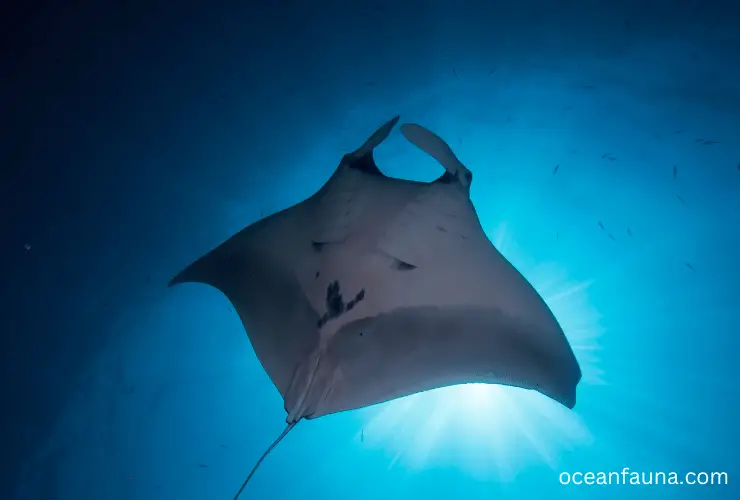
However, the consumption of manta rays is only sometimes accepted, and there are concerns about the sustainability of their populations. Manta rays are vulnerable to overfishing and are listed as “Near Threatened” by the International Union for Conservation of Nature (IUCN) ~(Source).
In some countries, manta ray fishing is regulated or prohibited as a result of concerns about declining populations.
In addition to conservation concerns, health concerns are associated with consuming manta ray meat.
Like other elasmobranchs, manta rays can accumulate high levels of mercury and other toxic substances in their flesh, which can pose health risks to humans if consumed in large quantities.
Who Eats a Manta Ray? Do Humans Eat Manta Rays?
Manta rays are large, filter-feeding marine animals that belong to the ray family. They are often targeted by several predator species, including sharks, orcas, and humans as well.
Sharks
Sharks are one of the top predators in the ocean and are known for their voracious appetites. They have been known to prey on manta rays, especially when food is scarce. Some shark species known to feed on manta rays include the tiger shark, bull shark, and oceanic whitetip shark.
While manta rays are not their preferred prey, they are still vulnerable to shark attacks and can be severely injured or killed as a result.
Orcas
Orcas, also known as killer whales, are another predator of manta rays. Orcas are apex predators and are at the top of the food chain. They are known to hunt a variety of prey, including manta rays.
Orcas are highly intelligent and use their strength, speed, and hunting tactics to capture their prey. They have been known to attack manta rays both in shallow and deep waters and can be a significant threat to the survival of these magnificent creatures.
Humans
Some human populations around the world consume manta rays as well. Manta rays are caught for their meat, gill rakers, and oil. The meat of manta rays is considered a delicacy in some countries, such as China and Japan, where it is used in soup and other dishes.
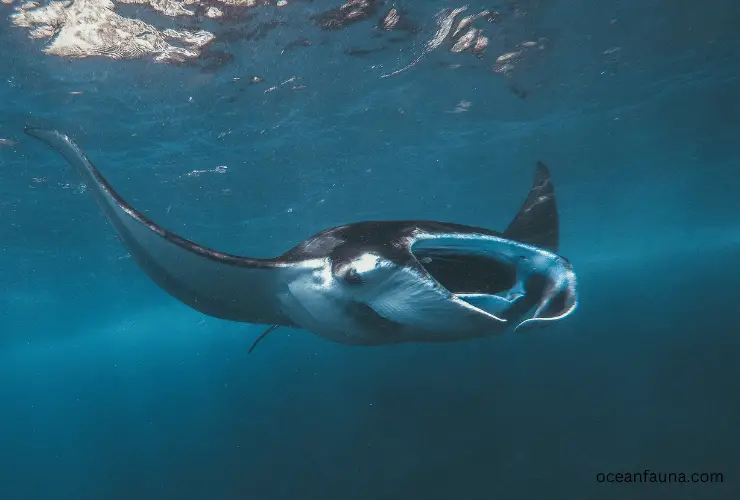
However, the consumption of manta rays is rare, and many people need to become more familiar with them as a food source.
The demand for manta rays products has increased in recent years, due to their perceived medicinal value and as a result of growing tourism in areas where manta rays are found.
In addition to being consumed for food, manta rays are also hunted for their gill rakers, which are believed to have medicinal properties in some cultures.
This has led to the creation of a market for manta ray gill plates, which are used in traditional medicine and as a luxury item.
While these consumers are not the only threat to manta rays, they play a significant role in the population dynamics of these animals.
Why is Manta Ray Consumed?
Here are some of the top reasons why Manta Rays are consumed around the world:
- Meat consumption: Manta rays are consumed for their meat, which is considered a delicacy in some cultures. It is often served dried, smoked, or as part of a soup.
- Gill rakers: The gill rakers of manta rays are used in traditional Chinese medicine as a treatment for a variety of illnesses, including high blood pressure, heart disease, and cancer.
- Fins: Manta rays are hunted for their fins, which are highly valued in the shark fin trade and used in shark fin soup.
- Traditional cultural practices: In some cultures, manta rays symbolize good luck and are hunted for use in religious or cultural ceremonies.
- Bycatch: Manta rays are often caught as bycatch, or unintended catch, in commercial fishing operations. They may be killed for their meat or fins, or may die as a result of being caught in fishing gear.
Is Consuming Manta Ray Illegal?
The legality of consuming manta rays varies depending on the country or region. In some places, manta ray fishing and trade are regulated by law, while in others, they are completely prohibited.
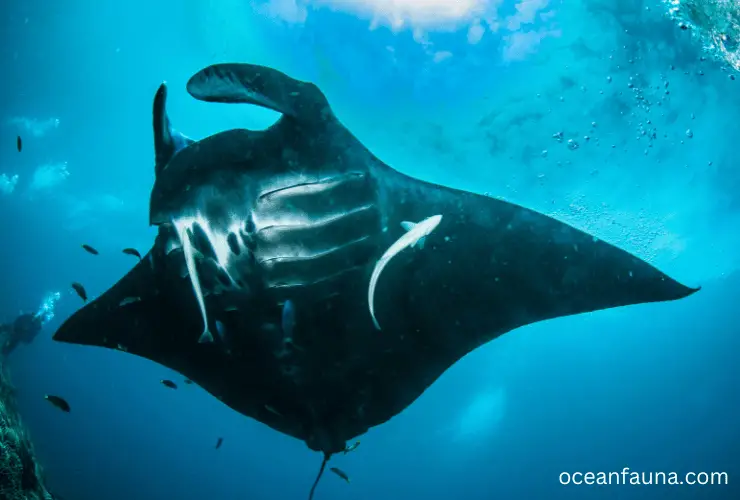
For example, in some countries, such as Ecuador, the Philippines, and the Maldives, manta rays are protected by law. Hunting, killing, or trading manta rays is illegal in these countries.
In other countries, manta rays are not specifically protected but may be regulated under broader conservation or wildlife laws.
It is also important to note that international trade in manta rays and their parts is regulated by the Convention on International Trade in Endangered Species of Wild Fauna and Flora (CITES).-(Source)
This international agreement aims to ensure that international trade in species does not threaten their survival. Manta rays are listed under CITES Appendix II, which means that international trade in these species must be strictly regulated to avoid utilization incompatible with their survival.
So, in short, before consuming manta rays, it is important to familiarize yourself with the local laws and regulations in your area and the status of manta rays under CITES.
Where is it Legal and Illegal to Eat Manta Rays?
The legality of eating manta rays varies depending on the location and species of the manta ray, as well as the laws and regulations in place to protect these species.
In many countries, manta rays are protected, and hunting or selling them for food or other purposes is illegal.
For example, in the United States, all species of manta rays are protected under the Endangered Species Act, which makes it illegal to take, possess, sell, or transport manta rays or any parts of them, including their meat.-(Source)
In other countries like China, manta rays are still hunted for their meat, fins, and gill plates, which are considered a delicacy in some cultures.
However, in recent years, conservation groups have been increasing pressure to ban the trade of manta rays and their products, and many countries have implemented or are implementing regulations to protect these species.
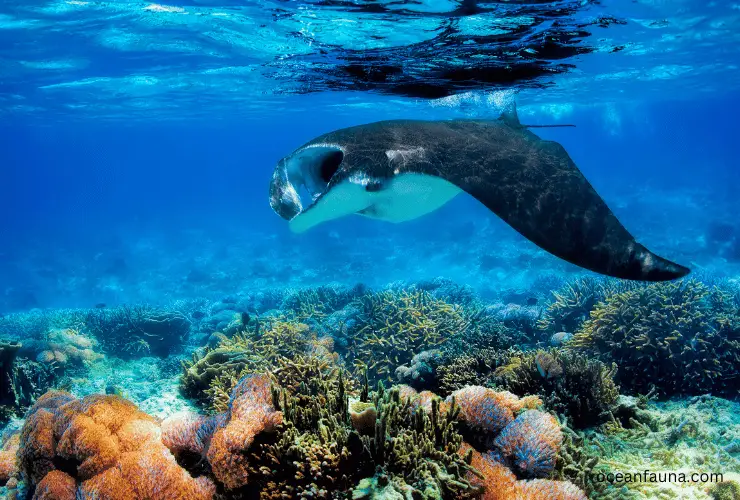
Are There Any Benefits of Eating a Manta Ray?
Here are some benefits of eating manta ray meat:
- Nutritional value: Manta ray meat is a good source of protein, vitamins, and minerals. It is also low in fat and calories, making it a healthy option for people who are looking to maintain a balanced diet.
- Culinary versatility: Manta ray meat has a mild flavor and a firm texture, making it a versatile ingredient that can be used in various dishes. Some people describe it as having a taste similar to swordfish or shark meat.
- Food security: In some coastal communities, manta ray meat is an important source of food and a way to provide for their families. Consuming manta ray meat can help to ensure food security for these communities.
- Cultural significance: Manta ray meat is a traditional food in some cultures and is an important part of their culinary heritage. Consuming manta ray meat can help to preserve cultural traditions and connect people to their ancestral roots.
- Economic benefits: Fishing and selling manta ray meat can provide economic benefits for fishing communities and support local economies.
- Medicinal Benefits: In traditional Chinese medicine, manta ray gill plates are believed to have medicinal properties and are used to treat a variety of ailments, including skin conditions and respiratory problems.
Furthermore, retailers at TCM claim that consuming Manta ray meat can have benefits like increasing breast milk, curing chickenpox, clearing out a smoker’s lungs, and detoxifying the blood.-(Source)
FAQs
Can You Tame a Manta Ray?
Taming a manta ray is not possible in the traditional sense as it is a wild animal, not a domesticated species but known to be Passive Tames. Manta rays are large, migratory animals that live in open waters and are not suited to life in captivity.
While some captive manta rays have been trained to accept food from humans and tolerate their presence, they are not considered to be tamed.
It is important to remember that wild animals belong in their natural habitats and should not be kept in captivity unless it is for conservation or rehabilitation purposes. Keeping manta rays in captivity can be harmful to their health and well-being and can also have negative impacts on their populations in the wild.
Can Manta Rays Bite You?
Manta rays do not bite because they have tiny, peg-like teeth that cannot harm a human being. They have a mouth on the underside of their head that filters small organisms from the water for food.
Their diet mainly consists of small planktonic creatures, such as krill and small fish, which they strain from the water using their gill rakers. Because they have very tiny teeth, manta rays cannot bite and pose little danger to humans.
What Does a Manta Ray Meat Taste Like?
Manta ray meat has a strong, slightly sweet taste that is often compared to fish or sharks and is said to taste like a mixture of fish and lobster. Some people describe it as having a “gamey” flavor.-(Source)
However, opinions on the taste of manta ray meat can vary widely, and some people find it to be unpleasantly strong or “fishy.”
It’s also worth noting that manta ray meat is not widely consumed and is not readily available in many parts of the world so taste experiences may vary depending on the specific preparation and cooking methods used.
Conclusion
Manta rays are considered to be the smartest fish in the ocean, and that is for several reasons.
- First, manta rays have large brains relative to their body size, which suggests that they have a high degree of cognitive ability.
- Second, they have been observed exhibiting complex social behaviors, such as cooperating with one another to feed and avoiding dangerous areas.
- Third, manta rays have been known to show a remarkable level of curiosity toward divers and boats, suggesting that they have a high degree of awareness and problem-solving ability.
All these behaviors suggest that manta rays are highly intelligent animals with a high degree of cognitive ability.
However, it is important to note that intelligence can vary widely among species, and it is challenging to compare the intelligence of different species in a meaningful way.

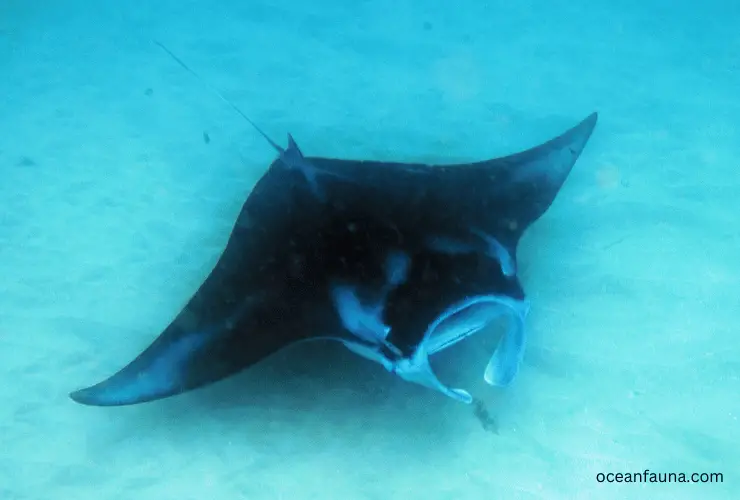
1 thought on “Are Manta Rays Edible?”